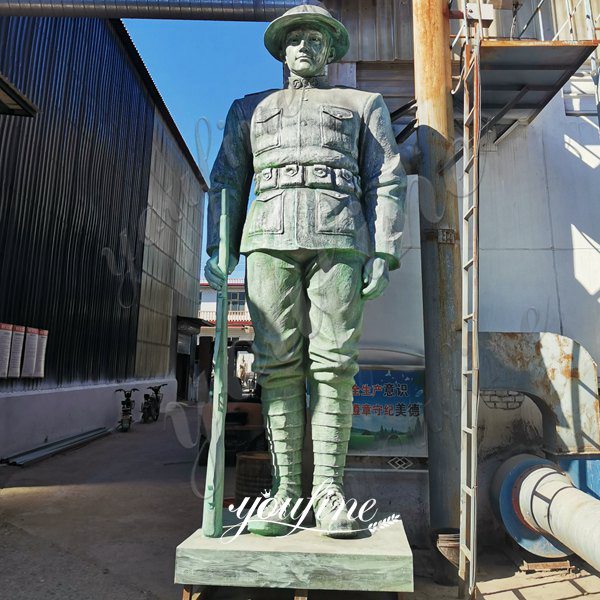Greek goddess statues have long captivated the world with their beauty, symbolism, and intricate craftsmanship. These ancient goddess statues reflect the profound mythology and artistic achievements of classical Greece and Rome. In this guide, we will explore 12 of the most famous statues of Greek goddesses, highlighting their mythological significance, artistic value, and historical background.
Venus de Milo
• Mythological Background: Venus is Aphrodite in ancient Greek mythology, the goddess of love and beauty. Born from the foam of the sea, she governs love, beauty, and desire. Her story runs throughout Greek mythology, including her love affair with the god of war Ares and her bringing the statue of Pygmalion to life. She is a symbol of beauty and the power of love.
• Creation Background: Founded around 150 BC on the Greek island of Milos, the sculpture’s creator remains uncertain. It was rediscovered in 1820 and later entered the Louvre, becoming one of its treasures.
• Artistic Value: Renowned for its unique beauty of imperfection, despite the loss of both arms, the sculpture’s flowing, graceful curves and delicate skin texture exemplify the ultimate pursuit of the human figure in ancient Greek sculpture. Its precise proportions and elegant posture have made it a classic example for later explorations of classical aesthetics.
• Symbolism: It is the most intuitive artistic symbol of love and beauty, representing the ancient Greeks’ yearning for and pursuit of beauty. Its incomplete form has made it a cultural symbol, signifying that beauty is not limited to completeness; even in imperfection, it can radiate eternal charm.
• Location: Louvre Museum, Paris, France. Along with the Mona Lisa and the Winged Victory of Samothrace, it is considered one of the Louvre’s “Three Treasures.”


Athena Sculpture at the Academy of Athens
• Mythological Background: Athena is the goddess of wisdom, war, and craftsmanship in ancient Greek mythology. Born from the head of Zeus, fully armed and possessing both wisdom and courage, she protected the city-state of Athens and aided heroes in overcoming adversities, such as helping Perseus slay Medusa. She symbolized the city-state’s prosperity and the inheritance of wisdom.
• Creation Background: Created to decorate the Academy of Athens, it aligns with the Academy’s core values of disseminating knowledge and pursuing wisdom. It blends mythological imagery with a scholarly atmosphere, becoming a key symbol of the academy’s culture.
• Artistic Value: It showcases the dual qualities of Athena, combining the majesty and dignity of a goddess of war, clad in armor and armed with weapons, with the elegance and composure of a goddess of wisdom. Through exquisite carving techniques, the depiction of her facial expression and the texture of her armor conveys an artistic charm that blends strength and wisdom, providing a model for the study of ancient Greek sculpture.
• Symbolism: It symbolizes the enlightenment of wisdom and the protection of the city-state. It inspired scholars at the Academy of Athens to pursue knowledge and explore truth. It embodies the ancient Greeks’ reverence for the goddess of wisdom and serves as a spiritual sustenance for cultural heritage.
• Location: The Academy of Athens, Greece. It is a key visual symbol of the Academy and the culture of Athens itself.
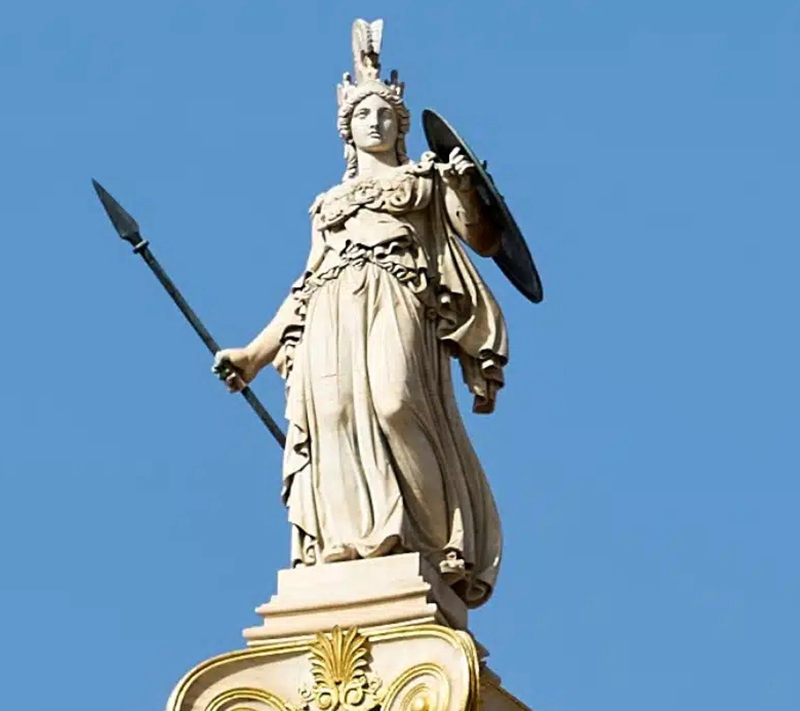
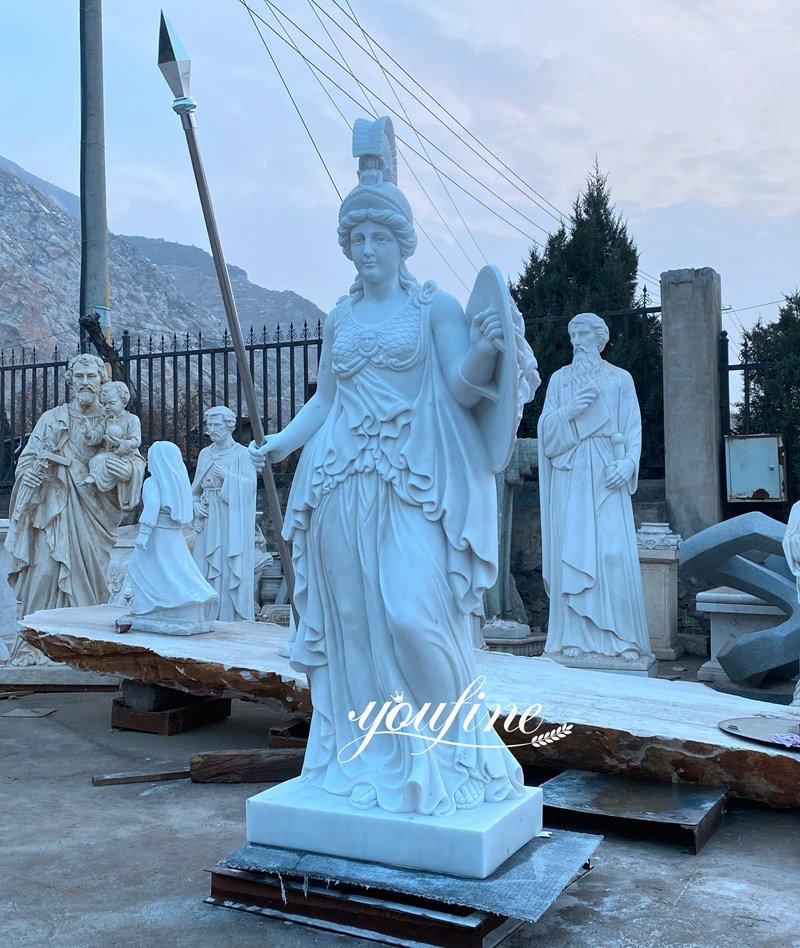
Statue of Aphrodite at Knidos
• Mythological Background: Aphrodite (Venus), born from the waves, governs love and beauty. In Greek mythology, she is the subject of numerous romantic affairs, falling in love with the god of war, Ares, and bestowing the magical power of love upon the mortal Pygmalion. Her power of love and beauty radiates throughout the world.
• Creation Background: Created by the sculptor Praxiteles in the 4th century BC, this statue is one of the earliest fully nude female statues in ancient Greece. Breaking with traditional sculptural representation, its creation on the island of Knidos ushered in a new trend in sculpting the beauty of the human form.
• Artistic Value: This groundbreaking depiction of the goddess of love in a fully nude form, with precise depiction of the human figure’s proportions and curves, and the exquisite beauty of the skin texture and posture, laid the foundation for subsequent human sculpture. It is a landmark work that marked the transition from tradition to innovation in ancient Greek sculpture.
• Symbolism: It symbolizes a groundbreaking expression of love and beauty, challenging the boundaries of traditional aesthetics and creativity. It represents the bold experimentation of ancient Greek art in depicting the human form, and has become a symbol of artistic innovation.
• Location: The original statue was housed in Knidos, Greece. Since then, the original has been lost, and replicas are displayed in museums around the world.

Victory of Samothrace
• Mythological Background: Nike, the goddess of victory, is the goddess of victory, good fortune, and success in Greek mythology. She often accompanies heroes in battle, crowning the victors with laurel wreaths. She symbolizes the glory and power of victory and serves as a spiritual symbol that inspires people to pursue success.
• Creation Background: Created in the 2nd century BC to commemorate a victory in an ancient Greek naval battle, the artist used Nike as a model and created this sculpture on the island of Samothrace, capturing the moment of victory.
• Artistic Value: Known for its intense sense of movement, the goddess’ wings spread, her dress flowing in the wind, and her body leaning forward. The delicate carving of the folds and posture conveys the power and beauty of movement, making it a pinnacle of dynamic expression in ancient Greek sculpture and a profound influence.
• Symbolism: It symbolizes victory, glory, and success, inspiring people to strive bravely and pursue victory. In art, it represents the exquisite grasp of dynamic beauty and power in ancient Greek sculpture.
• Location: The Louvre Museum in Paris, France, where it is considered one of the “Three Treasures of the Louvre” along with the Venus de Milo and the Mona Lisa.
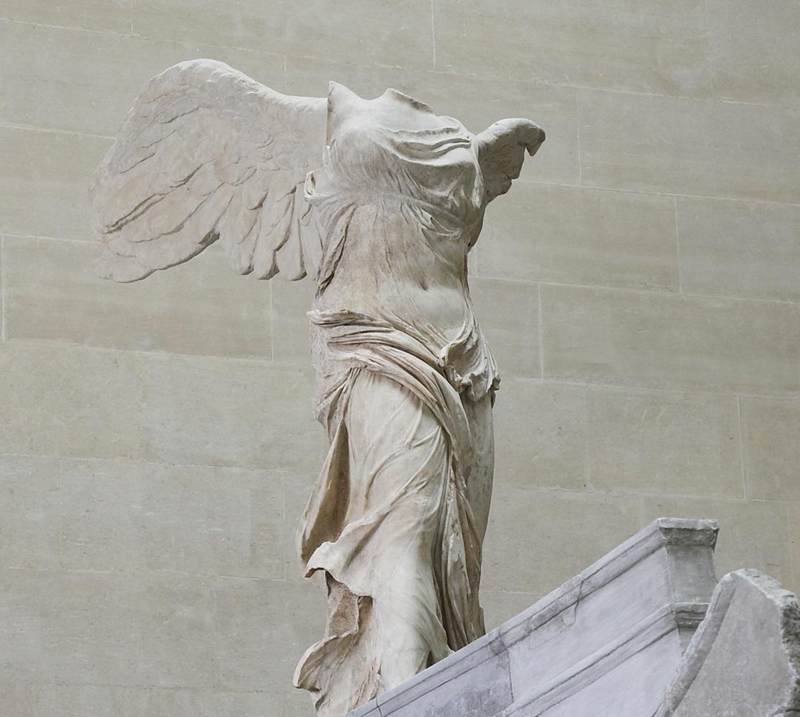
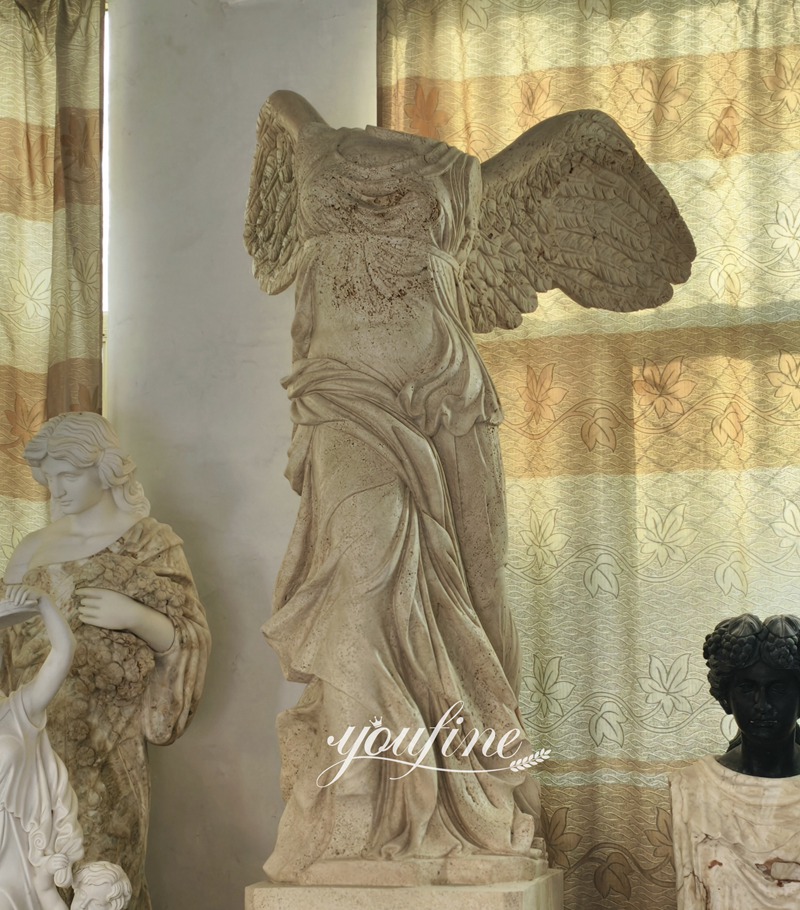
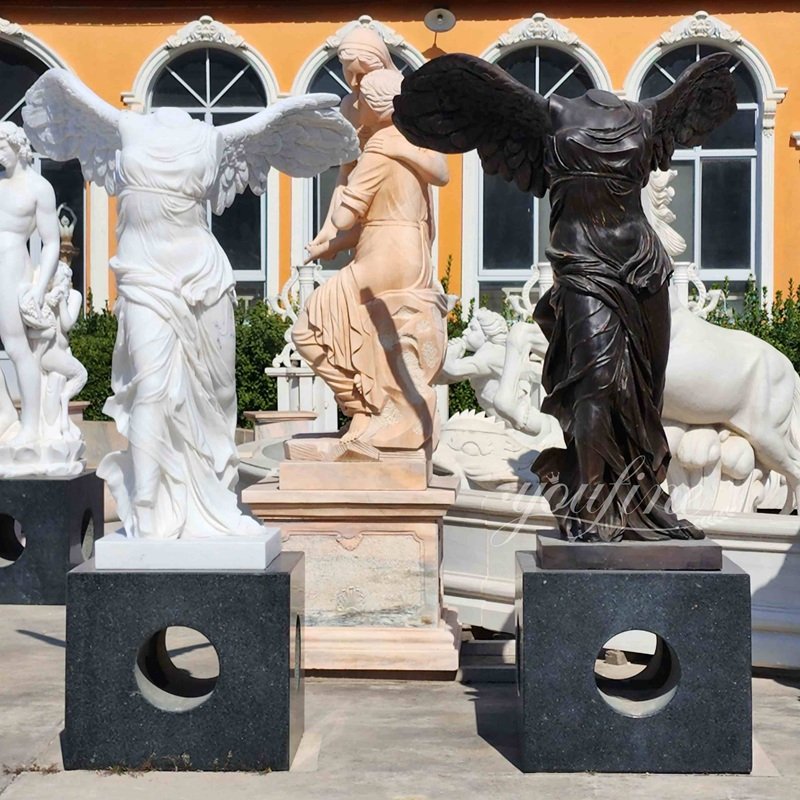
Diana Statue at the Palace of Versailles
• Mythological Background: Diana is Artemis in ancient Greek mythology, the goddess of hunting, the moon, and the wilderness. She excelled at archery, protected forests and wildlife, and was the patron saint of young girls. She was independent, brave, and possessed powerful natural powers.
• Creation Background: Created to decorate the Palace of Versailles and its gardens, it embodies the palace’s pursuit of luxury and a rich artistic atmosphere. Combining mythological imagery with French court aesthetics, it has become a key component of the palace’s landscape.
• Artistic Value: The sculpture blends elements of ancient Greek mythology with French sculptural craftsmanship to showcase Diana’s elegance and strength. The depiction of facial expressions and hunting equipment embodies the verve of classical art and the sophistication of court art, providing a model for the study of cross-cultural artistic integration.
• Symbolism: It symbolizes the connection between natural forces and court art, an artistic interpretation of the beauty of nature and hunting culture, and represents the court’s yearning for and reverence for nature and mythology.
• Location: The Palace of Versailles, France, where it adds to the cultural heritage and artistic atmosphere of the palace.


Hecate Sculpture in the Vatican Museums
• Mythological Background: Hecate is a goddess in ancient Greek mythology who governs magic, spirits, the night, and crossroads. She is shrouded in mystery and often associated with the underworld and magical rituals. She serves as a link between reality and the mystical world, guarding boundaries and transitions.
• Creation Background: Closely linked to religious culture and mythological heritage, the artist, inspired by ancient Greek mythology, combined the religious pursuit of mystery and sacred power to create the image of Hecate, a vehicle for the fusion of religious and mythological art.
• Artistic Value: The sculpture’s form and materiality create a mysterious and profound atmosphere. Hecate’s multifaceted image, along with elements such as the torch or weapon she holds, vividly convey the goddess’s mystical power, providing a unique example for the study of the fusion of mythology and religious art.
• Symbolism: It symbolizes mystery, magic, and boundaries, representing the reverence and exploration of the unknown and mystical powers in ancient Greek mythology. Within the context of religious art, it symbolizes the fusion of the sacred and the mysterious.
• Location: The Vatican Museums attract visitors interested in mythology and religious art.

Hera Sculpture in the Louvre
• Mythological Background: Hera is the goddess of heaven in ancient Greek mythology, wife of Zeus. She oversees marriage, childbirth, and the family, upholding family order and women’s rights. She is majestic and dignified, punishing those who violate marriage vows. She is the patron goddess of family and marriage.
• Creation Background: Inspired by the ancient Greek reverence for Hera, the sculptor used traditional classical sculpture techniques to portray Hera’s majesty. This sculpture later entered the Louvre, becoming a key exhibit showcasing ancient Greek mythology and sculpture.
• Artistic Value: Adhering to the classical aesthetic principles of ancient Greek sculpture, this sculpture features harmonious proportions and a dignified posture. The detailed carving of Hera’s facial expression and clothing evokes the queen’s majesty and nobility, making it a prime example for the study of classical sculptural styles and techniques.
• Symbolism: It symbolizes the sanctity of marriage, family order, and the authority of women. It represents the importance that ancient Greek society attached to family ethics and the institution of marriage, and is a classic symbol of the goddess in classical mythological sculpture.
• Location: The Louvre, France, showcases the charm of classical art.

Antonio Canova’s Hebe
• Mythological Background: Hebe is the goddess of youth, vitality, and cups in Greek mythology. Daughter of Zeus and Hera, she served wine to the gods at their banquets, symbolizing eternal youth and boundless vitality, and guarding the time of youth and joy.
• Creation Background: Created by the Neoclassical sculptor Antonio Canova, this sculpture embodies the Neoclassical approach of returning to and innovating classical aesthetics. Using Hebe as his subject, he created a work that combines classical charm with the artistic characteristics of the era.
• Artistic Value: This sculpture embodies the essence of Neoclassical sculpture, with simple, flowing lines and graceful, elegant forms. The depiction of Hebe’s youthful face, graceful figure, and detailed clothing accurately captures the Neoclassical pursuit of “noble simplicity and quiet grandeur,” making it a classic Neoclassical sculpture.
• Symbolism: This sculpture symbolizes youth, vitality, and beauty, representing Neoclassicism’s reinterpretation and presentation of the beautiful elements of classical mythology, and has become a key reference for youth-themed art.
• Location: Relevant art museums (such as the Kunsthistorisches Museum in Vienna, etc., subject to the actual collection).


Venus of Arles
• Mythological Background: Venus, also known as Aphrodite, is the goddess of love and beauty. Her mythological background revolves around love, beauty, and desire, and she has been embodied in diverse works of art, becoming a timeless symbol of love and beauty in artistic creation.
• Creation Background: Created during the Roman period, this sculpture represents a Roman sculptural inheritance and reinterpretation of the Greek image of the goddess of love. Discovered in the Arles region, it incorporates Roman aesthetics and stands as a representative work of Roman sculpture.
• Artistic Value: It bears witness to the profound influence of Greek sculpture on ancient Rome while showcasing the unique characteristics of Roman sculpture. Its depiction of human proportions and posture continues the classical tradition while incorporating the aesthetic preferences of Roman art, providing important material for the study of the inheritance and evolution of classical art.
• Symbolism: It symbolizes the inheritance and continuation of love and beauty across different eras. From ancient Greece to Rome, the image of the goddess of love has always been a key theme of artistic expression, representing the continuation of the spirit of classical art.
• Location: Museum in Arles, France.
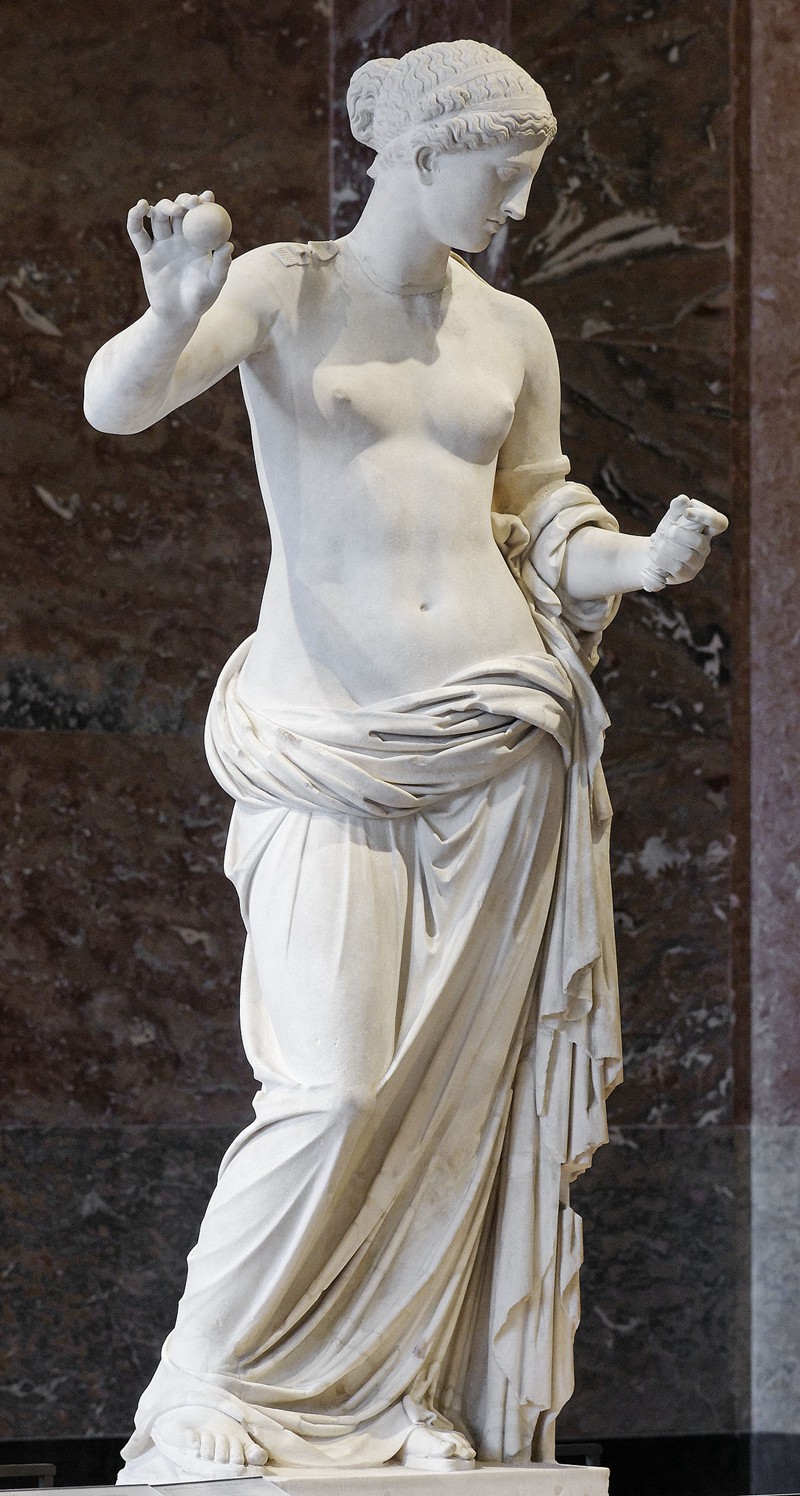
Goddess of Justice Sculpture
• Mythological Background: In Greek mythology, the goddess of justice is often associated with Dike, representing justice, fairness, and order. She upholds society’s moral and legal standards, punishes injustice, and maintains fairness and justice in the world, serving as the spiritual foundation of social order.
• Creation Background: Driven by society’s pursuit of justice and fairness, the artist uses the mythical goddess of justice as a model, embodying the abstract concept of justice into a sculpture.
• Artistic Value: Through sculptural forms (such as holding scales, a sword, and blindfolded figures), the sculpture vividly presents abstract concepts such as justice, fairness, and order, interpreting profound social concepts through artistic form, possessing both ideological and artistic value.
• Symbolism: A symbol of justice, fairness, and order, it represents society’s pursuit and adherence to fairness and justice. In public art, it serves as a spiritual symbol that conveys social values and guides the public to uphold justice.
• Location: Commonly found in public spaces symbolizing justice and order, such as courts and municipal squares, the specific location varies depending on the work.

Grain Goddess Sculpture
• Mythological Background: The Grain Goddess corresponds to Demeter in ancient Greek mythology, governing agriculture, grain, and the harvest. She is like the Earth Mother, bestowing bountiful harvests and nourishment upon people, safeguarding the very foundations of agricultural society. Her mythology is closely intertwined with agricultural production and human survival.
• Creation Background: Born out of reverence for agricultural culture, in agricultural societies, sculptures of the Grain Goddess were created to pray for bountiful harvests and express gratitude for the goddess’s gifts. These sculptures likely appeared in temples and agricultural ceremonial sites, creating artistic creations that fused agricultural culture with religious beliefs.
• Artistic Value: The sculpture documents the agricultural civilization’s devotion to and reliance on the Grain Goddess through artistic form. The sculpture incorporates agricultural elements (such as wheat ears and farm tools) in its form and decoration, showcasing the social culture and artistic aesthetics of a specific historical period and providing a vivid example for the study of agricultural culture and religious art.
• Symbolism: The Grain Goddess symbolizes bountiful harvest, nourishment, and the gifts of the earth, representing the awe and gratitude that agricultural societies felt for the power of nature, making it a crucial symbol for agricultural culture and harvest-themed art.
• Location: It may be stored in museums, temple ruins, or other locations related to agricultural culture or religious art, depending on the specific work.
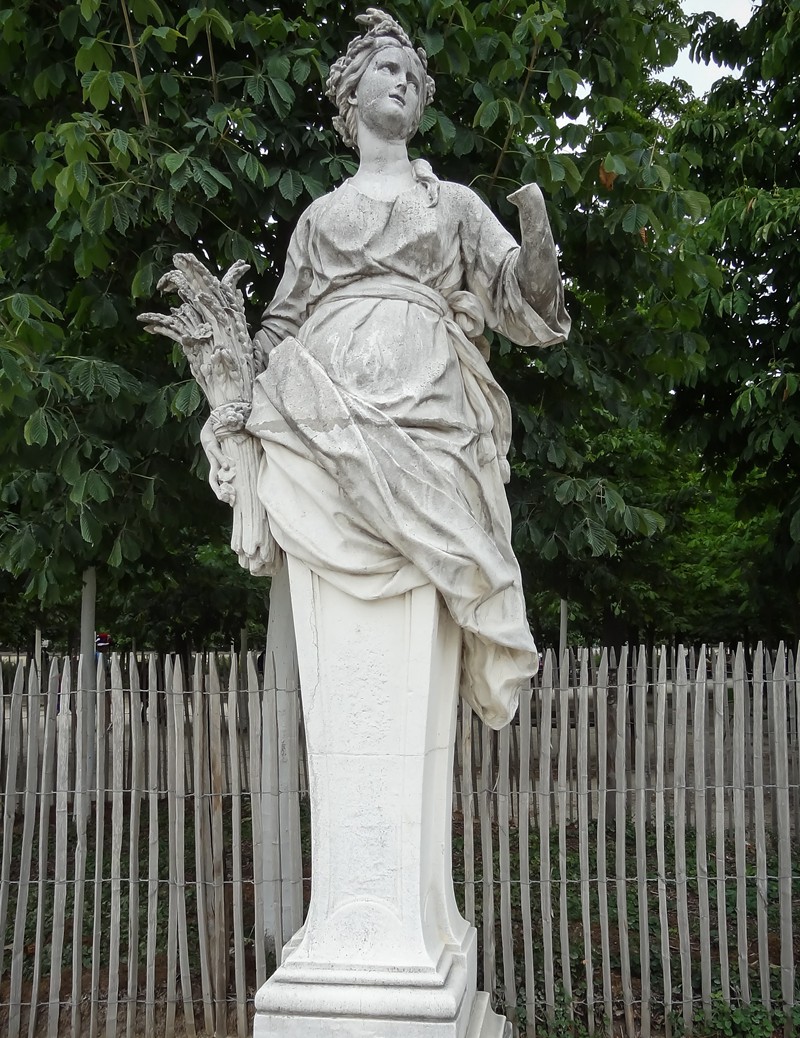
Persephone Statue
• Mythological Background: Persephone is the daughter of Zeus and Demeter in Greek mythology. She was abducted by Hades and cast into the underworld, becoming the Queen of the Underworld and the goddess of spring. Her myth embodies the changing seasons and the cycle of life, symbolizing the cycle of death and rebirth.
• Creation Background: Based on the myth of Persephone, the artist depicts her shifting roles between the underworld and spring through sculpture. This may be related to religious rites and cultural heritage, serving as an artistic medium for conveying the mythical concept of the cycle of life.
• Artistic Value: The sculpture depicts Persephone’s dual identities, depicting her demeanor and posture, embodying the profound meaning of the myth, providing a reference for the study of artistic expression of the cycle of life in ancient Greek mythology.
• Symbolism: It symbolizes the changing seasons, the cycle of life, and death and rebirth, representing the ancient Greeks’ understanding and exploration of the laws of nature and the mysteries of life.
• Location: The location will vary depending on the specific work, but it may be exhibited in museums or cultural venues related to ancient Greek mythology.
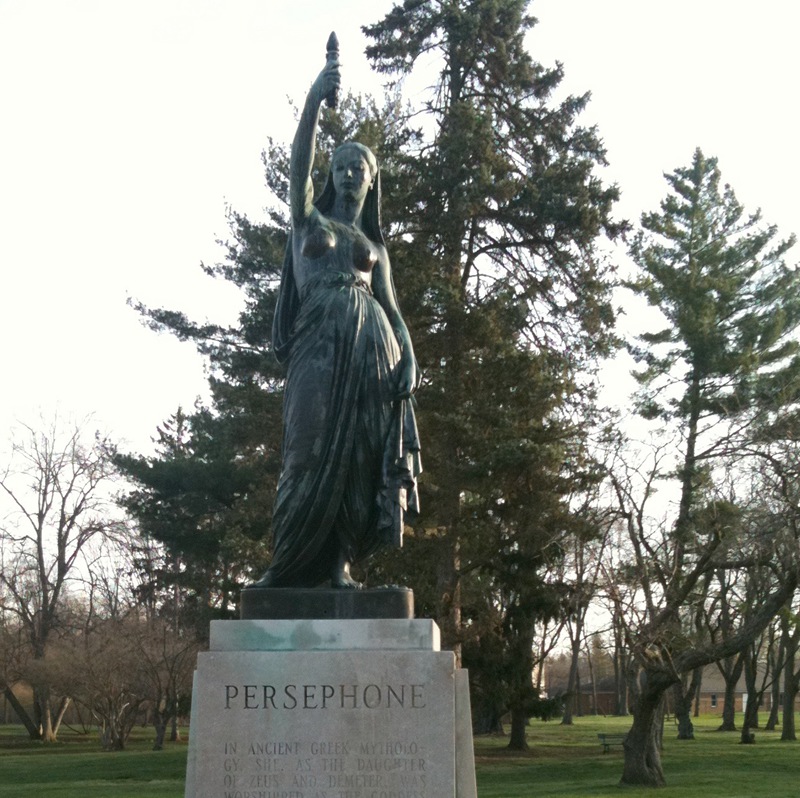
These 12 famous Greek goddess statues are the treasures of ancient Greek art and a precious cultural heritage. They allow us to experience the culture and history of thousands of years ago through the works of outstanding artists.
With the development of carving techniques, the reproduction of famous sculptures has become possible and common. If you want to experience the charm of these famous Greek goddess sculptures permanently and immersively, you could contact us to have them made for you. With more than 40 years of export experience and the exquisite carving experience of artists, the highly restored details and high-quality raw materials would surely satisfy you.


